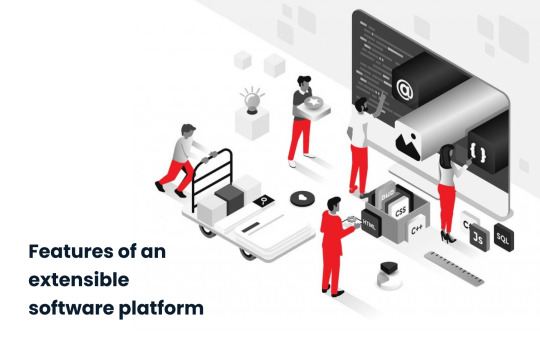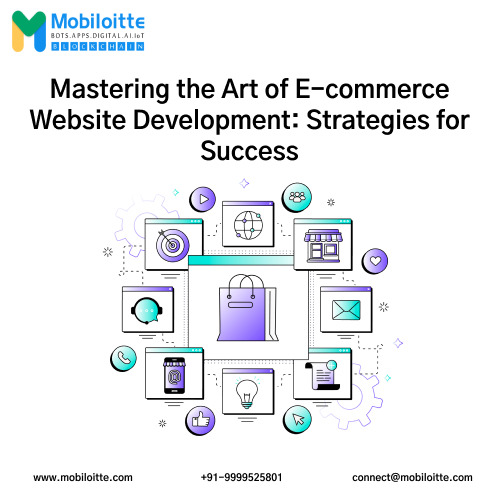#e commerce platform business model
Explore tagged Tumblr posts
Text
Become a Professional Seller: Unlock the Secrets to Sales Mastery

Are you ready to elevate your sales game and achieve unparalleled success in the marketplace? “How to Become a Professional Seller” is the ultimate eBook designed to guide you on your journey to mastering the art of selling. Packed with powerful insights and expert tips, this book is your go-to resource for transforming your selling skills into a professional edge.
Why This Book Is a Must-Read
Insider Secrets: Learn the techniques that top sellers use to close deals effortlessly.
Comprehensive Guidance: From understanding your customer to mastering negotiation, this book covers all the essential aspects of selling.
Actionable Tips: Implement proven strategies that will set you apart from the competition and boost your confidence.
What You’ll Discover
The mindset and habits of professional sellers.
How to identify and connect with your ideal customers.
Strategies for building trust and long-term client relationships.
Techniques to handle objections and close deals like a pro.
Who Is This Book For?
Whether you’re new to sales or an experienced seller aiming to refine your skills, this eBook offers valuable insights for:
Entrepreneurs launching or growing their business.
Sales professionals seeking to improve their performance.
Anyone looking to turn selling into a profitable and rewarding career.
Your Roadmap to Sales Success
“How to Become a Professional Seller” isn’t just a book; it’s a mentor that equips you with the knowledge and confidence to excel in any sales environment. With step-by-step guidance and practical examples, you’ll gain the expertise needed to thrive in today’s competitive market.
Take the First Step Today
Success in sales starts with mastering the basics and building on proven techniques. This eBook is your ticket to becoming a sales powerhouse, turning potential into profit, and achieving your goals.
Get your copy of How to Become a Professional Seller now and start your journey to sales mastery!
#E-commerce#Online business success#Work from home#Digital marketing#Building an online store#Digital commerce tips#Making money online#Marketing strategies#Business growth#Online business#E-commerce growth#Online business for beginners#How to make money online#E-commerce 2025#Successful online business#Launching an online store#Best e-commerce platforms#Online marketing#Online business plan#Digital business model
0 notes
Text
Unveiling Profit Paradox: Freemium Model of Global Business Success
In the dynamic landscape of the business world, the conventional wisdom dictates that profit is generated through the exchange of goods or services for monetary compensation. However, a fascinating paradox has emerged in recent years – businesses providing free services to users while still reaping substantial annual profits. This freemium model challenges traditional business model and raises…

View On WordPress
#cloud computing profitability#customer data value#digital media monetization#e-commerce platforms#e-learning platforms#free cloud services business#freemium business models#freemium model#gaming industry strategies#grow business#mobile app monetization#online advertising strategies#online marketplace models#open source collaboration#open source software revenue#search engine monetization#social media profitability#streaming service economics#technology business innovations#user data analytics
1 note
·
View note
Text
What is the importance of the extensibility of a platform? Its benefit for your e-commerce business.

Extensibility is a design approach in software development that aims to build platforms for software that may continuously expand and be built upon beyond their initial uses and settings. In other words, extensibility is a measure of a system's ability to be expanded and a representation of the amount of work required to obtain a given set of desired results.
By extending current capabilities, extensibility enables firms to address new challenges. In this way, adaptability, mutability, and agility in software are related to extensibility, as are ideas like modular software design and interoperability. All of these ideas essentially refer to the capacity to change procedures and modify the software in response to changing requirements.
The Importance of Extensibility
By utilizing extensibility, the IT team has more resources to use with current software and tools to handle changing business concerns. Extensible systems have the ability to support global organizations with a variety of business strategies for their success.
Beyond what the platform supports out of the box, a flexible platform enables developers to construct and execute apps that address the demands of the business. The platform's extension points make it simple for developers to attach add-ons that improve performance and usability and provide new capabilities.
Platform expansion features include REST and other APIs to connect to other components of the technology stack, as well as connector tools that exchange data and perform actions with other software.

Features of an extensible software platform
Software that is built with extensibility in mind is significantly more durable and useful than systems that are less adaptable or that can only be modified with significant financial, human, and technical investment.
One of the most important features of an expandable software platform is that it comes with numerous pre-built capabilities that businesses may require, preventing them from having to add to the platform right away.
Additionally, vendors should make it simple for programmers to expand their platforms. Providers can either provide developers with the tools they need to create their extensions, or they can let them use their own tools.
Businesses may adjust to change without having to reinvest by using extensible systems, which enable them to handle more sophisticated and nuanced business needs. Extensible systems allow the expansion of current systems to address new difficulties.
Types of Platform Extensibility
The types of platform extensibility listed below should all be taken into account when your business decides what it needs in order to be successful in a difficult and competitive marketplace.
User Interface (UI):
By creating a user interface that is more flexible, businesses may customize experiences to meet customer needs without sacrificing essential features. This is one way that extensibility lays the groundwork for a tradition of ongoing user experience development.
Data Models:
An extensible data model would be able to take into account a wide range of distinct factors, values, metrics, measurements, and KPIs without requiring a system-wide configuration change. An extensible system could operate as a platform that offers an interface allowing users to design and manage their own data models and business logic, allowing them to reprogram and redeploy the system towards new objectives and goals instead of creating an algorithm to solve a specific problem.
Integration:
Extensibility encourages the integration of business platforms, systems, and processes, which makes it much simpler for various business teams, projects, and divisions to work together. When integrated systems work together as a single, unified solution for managing the complete business, integrations built on open standards increase productivity and can produce superior business results.
Processes:
Extending business processes is crucial for creating fresh solutions to difficult problems. The term interoperability refers to how easily new technologies may integrate with current systems. Competent businesses must be able to create new procedures that expand upon their existing abilities and prevent them from starting over when it comes to changing a software system's fundamental operation.
Benefit from the extensibility of a platform for your e-commerce business
A platform's extensibility supports corporate growth by giving businesses access to a collaborative and innovative open environment.
When compared to alternative platforms that are closed-source or have constrained capabilities, businesses' freedom to incorporate new features into their cloud software innovations might be considered just a benefit.
Extensibility is crucial for a company's product because it enables them to update itself frequently with a platform that can be expanded with new features to remain relevant in the market and keep its competitive advantage.
The software extension service's better performance and better client experience can help the organization foster its average business users.
This makes your life simpler and enables you to concentrate on what's most important: making fantastic items for your company and clients.
For enterprises, extensibility can be quite valuable. Providing more services or products enables them to expand their reach, engage new audiences, and enhance client connections.
Higher degrees of extensibility on a platform can help users both now and in the future by making their lives simpler.
This extensibility has numerous potential advantages for the company. These include things like greater customer happiness, increased production, and increased efficiency.
Conclusion
Global organizations become more agile and resilient by working to improve the extensibility of systems and operational processes. Today's organizations need a software platform that is extensible in order to create and operate solutions that meet their present needs while also fostering innovation with minimal risk to continuing operations.
It's crucial to make sure your platform can be quickly extended in a world where technology is continually changing. With this talent, you'll be able to meet the demands of a shifting market while maintaining an advantage over your competitors.
#e-commerce business#extensible software platform#Platform Extensibility#utilizing extensibility#User Interface (UI)#modular software design#cloud software innovations#Data Models#e-commerce platform#how to start e-commerce business in India#eCommerce store provider#eCommerce platform in India#eCommerce store software#eCommerce industry software
0 notes
Text
Gainforall - Gold
One of the popular ways to generate passive income online is through affiliate marketing. Affiliate marketing allows individuals to earn a commission by promoting and selling other people's products or services. It provides the potential for passive income as once the initial setup is done, individuals can continue to earn income without actively participating in the sales process . This form of passive income offers flexibility and freedom, allowing individuals to work anytime and from anywhere . The earning potential in affiliate marketing can be significant, with average annual passive income ranging from $37,000 to $51,217. By leveraging the power of affiliate marketing, individuals can build a steady stream of passive income. The allure of affiliate marketing lies in its potential for huge passive income. Another way to generate passive income online is through e-commerce and dropshipping. Dropshipping involves setting up an online store and selling products without having to handle inventory or shipping. The dropshipping business model allows individuals to earn passive income by taking advantage of the difference between the wholesale and retail prices. With persistence and hard work, a dropshipping e-commerce store can become a profitable source of passive income. Additionally, e-commerce platforms like print on demand offer opportunities for individuals to create and sell custom products online, further expanding their passive income potential. Books like "Dropshipping from $0 to $10K a Month" provide valuable insights into building a successful e-commerce business and earning passive income. Creating and selling make money online courses and digital products is another avenue for generating passive income online. Online courses allow individuals to share their knowledge and expertise with others while earning passive income. Selling digital products such as e-books, audiobooks, and digital downloads can also provide a steady stream of passive income. Platforms like Thinkific offer the tools and resources needed to create and sell digital products online. Success stories of individuals making significant passive income selling digital products online highlight the potential of this income stream. Selling online courses and digital products is a relatively simple and realistic way to earn passive income online.
492 notes
·
View notes
Text
Chinese vendor Yin Xinwei sometimes makes close to $1,400 a day selling low-priced pill boxes, barbecue spits and other items to U.S. online consumers. The future of that business, and the bargain prices enjoyed by his American customers, is now in question amid a looming U.S. regulatory change aimed largely at two Chinese e-commerce platforms he sells on, Temu and Shein. The change, which comes amid rising trade tensions between the world’s two largest economies, is likely to have major consequences for already burdened Chinese sellers such as Yin who rely heavily on overseas markets. “The business model could disappear,” he said in a recent interview at his officein the southern Chinese city of Shenzhen. Both platforms have experienced explosive growth in recent years thanks to a customs exemption that allows packages whose contents are worth less than $800 to enter the United States almost tax-free and with minimal scrutiny. Each year hundreds of millions of packages, mostly from Chinese platforms, are sent directly to American consumers eager to take advantage of rock-bottom prices on clothing, electronics and other products. But this month, the White House said it planned to narrow the loophole, known as the “de minimis” exclusion, to prevent abuse and strengthen protections for American consumers and workers. That could mean painful times ahead for the Chinese sellers that supply the platforms — and higher prices for American consumers.
8 notes
·
View notes
Text

The Evolution of Local Shopping: How DASH Shop is Leading the Way
Shopping locally has always been more than just a transaction; it’s an experience. From the friendly banter with store owners to the joy of finding that perfect item, local shopping has been a cornerstone of community life. But as times have changed, so has the way we shop. Today, DASH Shop is at the forefront of this evolution, transforming local shopping into a seamless, technology-driven experience that blends the best of the past with the innovations of the future.
A Glimpse into the Past
Back in the day, local shopping was all about brick-and-mortar stores. People would stroll down Main Street, popping into their favorite shops, chatting with neighbors, and enjoying the tactile pleasure of seeing and touching products before buying them. It was a social activity, a chance to connect with others and support local businesses. However, as convenient as it was, this traditional model had its limitations. Store hours were fixed, inventory was finite, and sometimes the perfect item just wasn’t available.
The Modern Challenges
Fast forward to today, and the landscape of local shopping has drastically shifted. The rise of e-commerce giants has posed significant challenges for small, local retailers. With the convenience of online shopping, customers can browse endless aisles of products, compare prices, and have their purchases delivered right to their doorstep. This convenience has drawn many away from local shops, making it harder for small businesses to compete.
Local stores also face logistical hurdles such as managing inventory, offering competitive pricing, and meeting the high expectations of today’s consumers who demand quick, efficient service. The pandemic further accelerated these challenges, pushing even more shoppers online and leaving many local retailers struggling to stay afloat.
Enter DASH Shop: Revolutionizing Local Shopping
DASH Shop is here to bridge the gap between the traditional charm of local shopping and the modern demands of convenience and efficiency. By leveraging cutting-edge technology, DASH Shop is revolutionizing the local shopping experience in several key ways.
Instant Delivery:
One of the most significant ways DASH Shop is transforming local shopping is through its instant delivery service. Gone are the days of waiting weeks for an online order to arrive. With DASH Shop, customers can enjoy the convenience of having their purchases delivered to their doorstep within hours. This not only meets the high expectations of today’s consumers but also gives local retailers a competitive edge.
Robust Analytics:
DASH Shop provides retailers with powerful analytics tools, offering deep insights into sales trends, customer behavior, and inventory management. This data-driven approach helps retailers make informed decisions, optimize stock levels, and tailor their offerings to better meet customer needs. It’s like having a crystal ball for your business, ensuring you’re always one step ahead.
Seamless Integration:
One of the best parts about DASH Shop is its ability to integrate seamlessly with existing sales channels. Retailers don’t have to overhaul their entire system to benefit from DASH Shop’s features. Instead, the platform enhances current operations, adding value without disruption. This means smoother transitions and minimal hassle for business owners.
Community Engagement:
DASH Shop also helps retailers connect with their communities in meaningful ways. The platform supports local charities and community initiatives, fostering goodwill and strengthening community ties. By aligning with social causes, retailers can enhance their brand image and build customer loyalty.
Building Trust and Excitement
DASH Shop isn’t just a platform; it’s a movement. It’s about reimagining local shopping for the 21st century, combining the best of the old with the innovations of the new. By addressing the current challenges faced by local retailers and providing solutions that enhance the shopping experience, DASH Shop is positioning itself as a pioneer in local e-commerce.
So, whether you’re a retailer looking to boost your business or a shopper seeking convenience without compromising on community spirit, DASH Shop is here to lead the way. Join us in revolutionizing local shopping and experience the future today.
7 notes
·
View notes
Text
Top Online Business Ideas to Consider in 2025

Dubai's dynamic business environment offers numerous online opportunities for aspiring entrepreneurs. Here are some of the top online business ideas to consider in 2025:
E-commerce Store: Launch an online platform to sell products directly to consumers. With the UAE's e-commerce market projected to reach $9.2 billion by 2026, there's significant potential here. Focus on a specific niche, obtain the necessary e-commerce license, and develop a user-friendly website. Partnering with reliable delivery services and implementing effective marketing strategies will be crucial.
Dropshipping Business: Manage an online store without holding inventory. When a customer makes a purchase, the order is forwarded to a supplier who ships the product directly to the customer. This model reduces upfront costs and is gaining popularity globally.
Digital Marketing Agency: Offer services like social media management, SEO, and content creation to help businesses enhance their online presence. As companies increasingly recognize the importance of digital marketing, there's a growing demand for such expertise.
Online Education and Tutoring: Provide virtual classes or tutoring sessions in subjects you're knowledgeable about. The rise of online learning platforms has made education more accessible, and there's a consistent demand for quality instructors.
Content Creation and Blogging: Create engaging content through blogs, videos, or podcasts. Monetize your content via advertising, sponsorships, or affiliate marketing. Building a loyal audience can lead to significant revenue opportunities.
Affiliate Marketing: Promote products or services from other companies and earn a commission for each sale made through your referral. This model is cost-effective and can be lucrative with the right strategy.
App Development: Develop mobile or web applications to meet specific user needs. With the increasing reliance on digital solutions, innovative apps can gain rapid popularity.
Virtual Assistant Services: Offer administrative support to businesses or individuals remotely. Tasks can range from managing emails to scheduling appointments, providing flexibility for both parties.
Online Consulting: Leverage your expertise in a particular field to offer consulting services online. Whether it's business strategy, health, or finance, many are willing to pay for professional advice.
Graphic Design Services: Provide design solutions for logos, marketing materials, or websites. As businesses aim to stand out visually, skilled graphic designers are in high demand.
Social Media Influencer: Build a strong presence on platforms like Instagram or YouTube. With a substantial following, you can collaborate with brands for promotions and sponsorships.
Online Fitness Coaching: Offer virtual fitness classes or personalized training plans. The health and wellness industry continues to thrive, and many prefer the convenience of online sessions.
Stock Photography: Capture high-quality images and sell them on stock photography websites. Businesses and creators constantly seek quality visuals for their projects.
Handmade Crafts Online Store: Sell handmade items like jewelry, art, or home decor through an online platform. There's a market for unique, handcrafted products that can't be found in mass production.
Subscription Box Service: Curate and deliver boxes of niche products to subscribers regularly. This model has gained traction in various industries, from beauty products to gourmet foods.
Language Translation Services: Provide translation services for documents, websites, or media content. In a globalized world, effective communication across languages is essential.
Online Travel Agency: Assist clients in planning and booking their travel experiences. With the resurgence of travel, personalized planning services are valuable.
Virtual Event Planning: Organize and manage online events, from webinars to virtual conferences. As virtual events become more common, skilled planners are needed to ensure their success.
Print on Demand: Design custom apparel or merchandise and partner with suppliers who print and ship items as orders come in. This reduces the need for inventory and allows for creative flexibility.
Online Real Estate Brokerage: Facilitate property transactions through a digital platform. With the real estate market's evolution, online brokerages offer convenience to buyers and sellers.
Embarking on an online business in Dubai offers numerous advantages, including a strategic location, supportive government policies, and a tech-savvy population.
By selecting the right niche and implementing effective strategies, you can build a successful venture in this thriving market.
2 notes
·
View notes
Text
Online Classified Ads: A Classic Example of C2C E-Commerce
The Power of Online Classified Ads in C2C E-Commerce

In today’s digital era, e-commerce has redefined how individuals and businesses interact, creating seamless connections between buyers and sellers. A shining example of this transformation is the rise of C2C (Consumer-to-Consumer) e-commerce, with online classified ads leading the charge. Platforms like Craigslist, OLX, and Facebook Marketplace have revolutionized the traditional marketplace by making transactions faster, more convenient, and globally accessible.
Let’s explore how online classified ads exemplify C2C e-commerce, the technology behind their success, and the significant role they play in shaping the digital economy.
What is C2C E-Commerce?
C2C e-commerce, or consumer-to-consumer electronic commerce, facilitates direct transactions between individual buyers and sellers using third-party platforms. Unlike B2C (Business-to-Consumer) or B2B (Business-to-Business) models, C2C focuses entirely on connecting consumers for transactions without a middleman business.
Online classified ads are the backbone of C2C e-commerce, acting as digital hubs where users list products and services for sale. Other users can then browse, negotiate, and purchase directly from the seller.
Why Online Classified Ads Are Ideal for C2C E-Commerce
1. Direct Consumer Interaction Classified platforms prioritize direct communication between buyers and sellers. This immediate interaction fosters trust and simplifies decision-making, making transactions quicker and more personal.
2. Low or Zero Transaction Costs Most platforms allow users to post ads for free or charge minimal fees. This affordability encourages individuals to sell items and services, creating a thriving marketplace.
3. Diverse Offerings From second-hand furniture and electronics to rental properties and job postings, online classifieds cover a broad spectrum of categories, catering to a wide range of consumer needs.
4. Global and Local Reach Users can choose between targeting local buyers for quick sales or reaching a global audience for niche products, making these platforms highly versatile.
5. User-Friendly Platforms Designed to be simple and intuitive, classified sites are accessible to users of all skill levels, enabling easy posting, browsing, and communication.
The Technology Behind Online Classified Platforms
The success of online classified ads lies in the sophisticated technologies powering these platforms:
Advanced Search Algorithms: These ensure users quickly find relevant listings based on location, category, and price.
Secure Payment Gateways: Many platforms integrate secure payment options to safeguard transactions.
Responsive Web Design: Classified platforms are optimized for mobile devices, ensuring consistent user experiences across screens.
AI-Powered Recommendations: Artificial intelligence offers personalized suggestions based on user preferences and browsing behavior.
SEO and Analytics: Platforms leverage SEO to boost the visibility of listings on search engines and use analytics to understand and enhance user engagement.
Benefits of Online Classified Ads in C2C E-Commerce
1. Empowering Small Sellers Classified ads provide a level playing field for individuals and small businesses to reach buyers without requiring a physical storefront.
2. Promoting Sustainability By encouraging the resale of second-hand goods, these platforms reduce waste and contribute to a circular economy.
3. Faster Transactions With features like instant messaging and real-time notifications, classified platforms streamline communication and accelerate deals.
4. Cost-Effective Marketing Sellers can create impactful ads with photos and detailed descriptions without needing expensive marketing campaigns.
Challenges in C2C E-Commerce via Classified Ads
Despite their advantages, online classifieds face challenges:
Trust Issues: Buyers may worry about product quality, payment security, or fraudulent listings.
Minimal Regulation: Without strict oversight, issues like spam, counterfeit goods, and misleading ads may arise.
High Competition: The abundance of listings can make it hard for sellers to stand out without investing in premium placements.
Logistics: Delivery is often left to buyers and sellers, complicating transactions for bulky or long-distance items.
How Online Classified Ads Drive C2C E-Commerce Growth
Despite these obstacles, classified platforms remain pivotal in the growth of C2C e-commerce for several reasons:
Democratization of Commerce: They empower anyone with internet access to participate in the marketplace.
Innovative Monetization: Features like promoted ads and premium listings offer additional value to users while generating revenue for platforms.
Community Building: By fostering local transactions and encouraging user feedback, classified platforms create engaged communities.
Optimizing Classified Listings with SEO
For sellers, SEO (Search Engine Optimization) is essential to boost visibility on classified platforms. Including relevant keywords like “buy and sell locally,” “best deals online,” or “affordable used goods” can significantly enhance listing performance.
Companies like KSoft Technologies specialize in web development, SEO strategies, and digital marketing, helping classified platforms and individual sellers achieve:
Higher rankings on search engines.
Enhanced user interfaces for better engagement.
Scalable and secure technology solutions.
The Future of Online Classified Ads in C2C E-Commerce
The future of online classifieds is bright, with innovations in AI, blockchain, and logistics solutions promising to address current challenges. These advancements can enhance trust, security, and overall user experiences, ensuring the continued growth of C2C e-commerce.
As technology evolves, businesses offering web development, mobile app development, and SEO services, such as KSoft Technologies, will play a vital role in empowering classified platforms to stay competitive and innovative.
Conclusion
Online classified ads are a cornerstone of C2C e-commerce, creating spaces for direct consumer interaction, affordable transactions, and sustainable commerce. By connecting buyers and sellers without traditional barriers, these platforms exemplify the potential of technology-driven marketplaces.
Whether you're looking to improve your classified platform or enhance your digital presence, KSoft Technologies offers cutting-edge solutions in web development, mobile app creation, and SEO strategies to help you thrive.
Visit KSoft Technologies today and discover how we can help elevate your business in the evolving digital economy! 🚀
#business to business#ecommerce#branding#artificial intelligence#web design#web development#seo services#techinnovation#economy#erp software#entrepreneur#adobe#technews#computer#technology
3 notes
·
View notes
Text
Mastering the Art of E-commerce Website Development: Strategies for Success

Introduction: In the rapidly evolving world of online commerce, building a successful e-commerce website requires a blend of technical expertise and strategic thinking. Whether you're starting a new online store or seeking to optimize an existing one, understanding the key strategies for e-commerce website development is essential. In this article, we will delve into informative content that will equip you with the knowledge and insights needed to master the art of e-commerce website development and drive your online business towards success.
Creating a User-Friendly Interface: The user interface (UI) plays a crucial role in the success of an e-commerce website. Focus on creating a clean and intuitive design that guides users seamlessly through the purchasing journey. Make sure to place key elements, such as search bars, shopping carts, and call-to-action buttons, prominently for easy access.
Mobile Optimization: With the rise in mobile shopping, optimizing your e-commerce website for mobile devices is imperative. Implement responsive design techniques to ensure that your website is visually appealing and functions flawlessly on various screen sizes. Mobile-friendly websites lead to better user experiences and increased conversions.
Streamlining the Checkout Process: A complex and time-consuming checkout process can lead to cart abandonment. Simplify the steps required to complete a purchase, minimize form fields, and offer guest checkout options to provide a frictionless experience. Incorporating trusted payment gateways and displaying security seals can also boost customer confidence during checkout.
Implementing Effective Product Categorization and Filtering: Organizing your products into clear categories and implementing robust filtering options helps users easily find the products they are looking for. Consider attributes like price range, color, size, and brand to enable efficient product navigation. This improves user experience and reduces bounce rates.
Enhancing Site Performance and Speed: Website speed directly impacts user satisfaction and search engine rankings. Optimize your website's performance by minimizing file sizes, leveraging caching techniques, and utilizing content delivery networks (CDNs). Regularly monitor and optimize server response times to ensure fast loading speeds.
Integrating Reliable Payment Gateways: A secure and seamless payment experience is crucial for building trust with customers. Integrate reputable payment gateways that support multiple payment methods. Ensure that your website is Payment Card Industry Data Security Standard (PCI DSS) compliant to safeguard sensitive customer information.
Leveraging SEO Strategies: Implement search engine optimization (SEO) techniques to improve your website's visibility in search engine results. Perform keyword research and optimize product descriptions, page titles, meta tags, and URLs. Engage in content marketing and link building to drive organic traffic to your e-commerce website.
Utilizing Analytics for Data-Driven Insights: Leverage web analytics tools to gain valuable insights into customer behavior, demographics, and purchasing patterns. Analyze data on user engagement, conversion rates, and abandoned carts to identify areas for improvement and make informed business decisions.
Incorporating Social Proof and Customer Reviews: Customer reviews and testimonials have a significant impact on purchasing decisions. Integrate review functionalities and showcase positive feedback to build trust and credibility. Encourage customers to leave reviews and engage with them promptly to foster a sense of community.
Continuous Optimization and Testing: E-commerce website development is an iterative process. Regularly monitor website performance, conduct A/B testing, and gather user feedback to identify areas for improvement. Stay updated with the latest industry trends and emerging technologies to adapt and stay ahead of the competition.
Conclusion: Mastering the art of e-commerce website development involves a combination of technical expertise, user-centric design, strategic planning, and continuous optimization. At Mobiloitte, we understand the intricacies of e-commerce website development and the strategies required for success in the ever-evolving digital landscape.
#E commerce development company#best ecommerce website development company#e commerce development services#e commerce platform business model#e commerce platform business
0 notes
Text
Why Tableau is Essential in Data Science: Transforming Raw Data into Insights

Data science is all about turning raw data into valuable insights. But numbers and statistics alone don’t tell the full story—they need to be visualized to make sense. That’s where Tableau comes in.
Tableau is a powerful tool that helps data scientists, analysts, and businesses see and understand data better. It simplifies complex datasets, making them interactive and easy to interpret. But with so many tools available, why is Tableau a must-have for data science? Let’s explore.
1. The Importance of Data Visualization in Data Science
Imagine you’re working with millions of data points from customer purchases, social media interactions, or financial transactions. Analyzing raw numbers manually would be overwhelming.
That’s why visualization is crucial in data science:
Identifies trends and patterns – Instead of sifting through spreadsheets, you can quickly spot trends in a visual format.
Makes complex data understandable – Graphs, heatmaps, and dashboards simplify the interpretation of large datasets.
Enhances decision-making – Stakeholders can easily grasp insights and make data-driven decisions faster.
Saves time and effort – Instead of writing lengthy reports, an interactive dashboard tells the story in seconds.
Without tools like Tableau, data science would be limited to experts who can code and run statistical models. With Tableau, insights become accessible to everyone—from data scientists to business executives.
2. Why Tableau Stands Out in Data Science
A. User-Friendly and Requires No Coding
One of the biggest advantages of Tableau is its drag-and-drop interface. Unlike Python or R, which require programming skills, Tableau allows users to create visualizations without writing a single line of code.
Even if you’re a beginner, you can:
✅ Upload data from multiple sources
✅ Create interactive dashboards in minutes
✅ Share insights with teams easily
This no-code approach makes Tableau ideal for both technical and non-technical professionals in data science.
B. Handles Large Datasets Efficiently
Data scientists often work with massive datasets—whether it’s financial transactions, customer behavior, or healthcare records. Traditional tools like Excel struggle with large volumes of data.
Tableau, on the other hand:
Can process millions of rows without slowing down
Optimizes performance using advanced data engine technology
Supports real-time data streaming for up-to-date analysis
This makes it a go-to tool for businesses that need fast, data-driven insights.
C. Connects with Multiple Data Sources
A major challenge in data science is bringing together data from different platforms. Tableau seamlessly integrates with a variety of sources, including:
Databases: MySQL, PostgreSQL, Microsoft SQL Server
Cloud platforms: AWS, Google BigQuery, Snowflake
Spreadsheets and APIs: Excel, Google Sheets, web-based data sources
This flexibility allows data scientists to combine datasets from multiple sources without needing complex SQL queries or scripts.
D. Real-Time Data Analysis
Industries like finance, healthcare, and e-commerce rely on real-time data to make quick decisions. Tableau’s live data connection allows users to:
Track stock market trends as they happen
Monitor website traffic and customer interactions in real time
Detect fraudulent transactions instantly
Instead of waiting for reports to be generated manually, Tableau delivers insights as events unfold.
E. Advanced Analytics Without Complexity
While Tableau is known for its visualizations, it also supports advanced analytics. You can:
Forecast trends based on historical data
Perform clustering and segmentation to identify patterns
Integrate with Python and R for machine learning and predictive modeling
This means data scientists can combine deep analytics with intuitive visualization, making Tableau a versatile tool.
3. How Tableau Helps Data Scientists in Real Life
Tableau has been adopted by the majority of industries to make data science more impactful and accessible. This is applied in the following real-life scenarios:
A. Analytics for Health Care
Tableau is deployed by hospitals and research institutions for the following purposes:
Monitor patient recovery rates and predict outbreaks of diseases
Analyze hospital occupancy and resource allocation
Identify trends in patient demographics and treatment results
B. Finance and Banking
Banks and investment firms rely on Tableau for the following purposes:
✅ Detect fraud by analyzing transaction patterns
✅ Track stock market fluctuations and make informed investment decisions
✅ Assess credit risk and loan performance
C. Marketing and Customer Insights
Companies use Tableau to:
✅ Track customer buying behavior and personalize recommendations
✅ Analyze social media engagement and campaign effectiveness
✅ Optimize ad spend by identifying high-performing channels
D. Retail and Supply Chain Management
Retailers leverage Tableau to:
✅ Forecast product demand and adjust inventory levels
✅ Identify regional sales trends and adjust marketing strategies
✅ Optimize supply chain logistics and reduce delivery delays
These applications show why Tableau is a must-have for data-driven decision-making.
4. Tableau vs. Other Data Visualization Tools
There are many visualization tools available, but Tableau consistently ranks as one of the best. Here’s why:
Tableau vs. Excel – Excel struggles with big data and lacks interactivity; Tableau handles large datasets effortlessly.
Tableau vs. Power BI – Power BI is great for Microsoft users, but Tableau offers more flexibility across different data sources.
Tableau vs. Python (Matplotlib, Seaborn) – Python libraries require coding skills, while Tableau simplifies visualization for all users.
This makes Tableau the go-to tool for both beginners and experienced professionals in data science.
5. Conclusion
Tableau has become an essential tool in data science because it simplifies data visualization, handles large datasets, and integrates seamlessly with various data sources. It enables professionals to analyze, interpret, and present data interactively, making insights accessible to everyone—from data scientists to business leaders.
If you’re looking to build a strong foundation in data science, learning Tableau is a smart career move. Many data science courses now include Tableau as a key skill, as companies increasingly demand professionals who can transform raw data into meaningful insights.
In a world where data is the driving force behind decision-making, Tableau ensures that the insights you uncover are not just accurate—but also clear, impactful, and easy to act upon.
#data science course#top data science course online#top data science institute online#artificial intelligence course#deepseek#tableau
3 notes
·
View notes
Text
The Road to Success in Digital Commerce: How to Start and Thrive Online

In today’s world, e-commerce has become one of the fastest-growing fields globally. With technological advancements and the widespread use of the internet, anyone can start an online business and reach a global audience. However, success in this field requires more than just creating an online store. If you’re considering entering this world or want to grow your current business, the book “The Road to Success in Digital Commerce: How to Start and Thrive Online” is your ultimate guide to achieving your goals.
Why You Should Read This Book?
You may feel that online commerce is just a replication of traditional business, but it is actually a complex world that requires precise strategies and multiple skills. Through this book, you will gain insight into the tools and techniques that will help you excel in a competitive market. The book offers a practical approach to getting started with e-commerce, highlighting common mistakes you may encounter and providing practical solutions to avoid them.
What Makes This Book Stand Out?
1. Practical and Realistic Steps: The book doesn’t just give you theoretical or general advice — it provides actionable steps that you can implement right away. Whether you’re starting from scratch or looking to improve your current store’s performance, you’ll find a comprehensive guide to help you at every stage of your online business journey.
2. Advanced Marketing Strategies: It’s not enough to just have a great product; you also need effective marketing strategies to reach your target audience. The book discusses innovative marketing strategies, such as search engine optimization (SEO) and paid ads on platforms like Google and Facebook, to help you attract visitors and convert them into customers.
3. Designing the Perfect User Experience: The design of your website and the user experience are crucial factors in determining the success of any online store. This book explains how to optimize your site to be easy to navigate, fast-loading, and provide a smooth checkout process, which boosts customer trust in your product.
4. Avoiding Common Mistakes: Many new business owners make costly mistakes at the beginning. Whether those mistakes are related to shipping, payment, or even customer interactions, the book addresses these issues practically and gives you the right solutions to avoid them.
The Benefits You’ll Gain from Reading This Book:
Launching Your Business with Confidence: If you’re feeling hesitant or don’t know where to start, the book will give you the roadmap you need to direct your steps. You’ll learn how to build a successful online store and quickly attract new customers.
Adapting to Rapid Market Changes: The digital world is evolving quickly, and entrepreneurs must adapt to these changes. The book highlights how to keep up with these shifts by leveraging modern digital tools.
Boosting Your Competitive Edge: By improving your marketing strategies and user experience, the book equips you with the knowledge to compete effectively in the market and carve out a prominent space among your competitors.
In Conclusion:
If you’re serious about entering the world of online commerce or improving the performance of your current online store, “The Road to Success in Digital Commerce: How to Start and Thrive Online” is the best choice for you. With its practical advice and well-thought-out strategies, you can start building a strong business that achieves sustainable success. Don’t miss the opportunity — begin your journey into digital commerce now and achieve your business goals with confidence and efficiency.
How to succeed in online trading get a copy for free
#E-commerce#Online business success#Work from home#Digital marketing#Building an online store#Digital commerce tips#Making money online#Marketing strategies#Business growth#Online business#E-commerce growth#Online business for beginners#How to make money online#E-commerce 2025#Successful online business#Launching an online store#Best e-commerce platforms#Online marketing#Online business plan#Digital business model#التجارة الإلكترونية#نجاح التجارة عبر الإنترنت#العمل عبر الإنترنت#التسويق الرقمي#بناء متجر إلكتروني#نصائح التجارة الرقمية#الربح عبر الإنترنت#استراتيجيات التسويق#تطوير الأعمال التجارية#التجارة الرقمية
0 notes
Text
Is Payment Gateway Integration Suitable for Small Businesses?

In today’s rapidly evolving digital economy, small businesses are increasingly seeking efficient and scalable solutions to handle financial transactions. One of the most transformative tools available to them is payment gateway integration. But is it suitable for small businesses? The answer lies in understanding how this technology aligns with their operational needs, growth aspirations, and customer expectations.
What Is Payment Gateway Integration?
Payment gateway integration refers to the process of embedding a secure, digital payment processing system into a business’s online platform or point-of-sale system. This technology enables businesses to accept payments from customers through various channels, such as credit/debit cards, digital wallets, and bank transfers. By facilitating smooth and secure transactions, payment gateways ensure that both customers and merchants have a seamless experience.
For small businesses, integrating a payment gateway is not just a convenience; it’s becoming a necessity. The rise of e-commerce and digital payments has shifted consumer expectations, making it essential for even the smallest enterprises to provide flexible and secure payment options.
Benefits of Payment Gateway Integration for Small Businesses
Enhanced Customer Experience Payment gateway integration allows small businesses to offer their customers multiple payment options, including digital wallets, UPI, and net banking. This flexibility enhances the customer experience by making transactions quick and hassle-free.
Improved Security Payment gateways use advanced encryption and fraud detection technologies to ensure the security of customer data. For small businesses, this level of protection builds trust and encourages repeat business.
Streamlined Operations Integrating a payment gateway reduces the need for manual transaction management. Payments are processed automatically, minimizing errors and saving valuable time that can be redirected to other aspects of the business.
Global Reach A payment gateway enables small businesses to accept payments from international customers. This capability is particularly valuable for businesses looking to expand their market reach.
Cost-Effectiveness Modern payment gateway solutions often come with flexible pricing models that cater to the needs of small businesses. Some providers even offer pay-as-you-go plans, ensuring affordability for startups and smaller enterprises.
Payout Solutions: Simplifying Financial Management
One of the complementary services that often comes with payment gateway integration is payout solutions. Payout solutions allow businesses to automate payments to vendors, suppliers, and employees, streamlining the flow of funds. For small businesses, this functionality can significantly reduce administrative burdens and improve cash flow management.
By integrating payout solutions with payment gateways, small businesses can achieve end-to-end financial automation. This integration not only saves time but also provides transparency and accuracy in financial transactions. For example, a small business owner can use payout solutions to manage payroll, refunds, or vendor payments with just a few clicks.
Micro ATM: A Complementary Tool for Small Businesses
In addition to utility payment solutions technologies like Micro ATM are gaining popularity among small businesses. A Micro ATM is a portable device that allows merchants to accept card payments and provide basic banking services, such as cash withdrawals, to customers. This solution is particularly useful in areas where digital payment adoption is still growing and cash transactions remain prevalent.
Combining Micro ATM services with payment gateway integration provides small businesses with a comprehensive financial toolkit. While the gateway handles online payments, the Micro ATM ensures that businesses can cater to customers who prefer or rely on cash transactions. This dual approach bridges the gap between digital and traditional payment methods, making businesses more versatile and customer-friendly.
Challenges and Considerations
While payment gateway integration offers numerous benefits, small businesses must also be aware of potential challenges. These include:
Initial Setup Costs Although many payment gateway providers offer affordable plans, there can be initial setup costs associated with integrating the system into existing platforms.
Technical Expertise Small businesses may need assistance in integrating and maintaining a payment gateway. Partnering with a reliable technology provider can help overcome this hurdle.
Regulatory Compliance Businesses must ensure that their payment gateway complies with local and international regulations to avoid legal complications.
Choosing the Right Provider Not all payment gateways offer the same features or pricing models. Small businesses should carefully evaluate providers based on their specific needs.
Xettle Technologies: A Partner for Small Business Growth
One example of a provider catering to small businesses is Xettle Technologies. Xettle offers scalable payment gateway integration services along with advanced payout solutions. Their user-friendly platforms are designed to meet the unique challenges faced by small enterprises, ensuring a smooth and secure transaction experience. By choosing a partner like Xettle Technologies, small businesses can access reliable tools that support their growth and streamline their financial operations.
Conclusion
Payment gateway integration is not only suitable for small businesses but is increasingly becoming a cornerstone of their success. By providing secure, efficient, and flexible payment processing, gateways empower small enterprises to meet customer expectations, expand their market reach, and improve operational efficiency. When combined with technologies like payout solutions and Micro ATM, these tools offer a holistic approach to financial management.
While challenges exist, they can be mitigated by selecting the right provider and leveraging innovative solutions like those offered by Xettle Technologies. As digital payments continue to dominate the financial landscape, small businesses that embrace payment gateway integration will be well-positioned to thrive in a competitive market.
2 notes
·
View notes
Text
Why Should You Do Web Scraping for python

Web scraping is a valuable skill for Python developers, offering numerous benefits and applications. Here’s why you should consider learning and using web scraping with Python:
1. Automate Data Collection
Web scraping allows you to automate the tedious task of manually collecting data from websites. This can save significant time and effort when dealing with large amounts of data.
2. Gain Access to Real-World Data
Most real-world data exists on websites, often in formats that are not readily available for analysis (e.g., displayed in tables or charts). Web scraping helps extract this data for use in projects like:
Data analysis
Machine learning models
Business intelligence
3. Competitive Edge in Business
Businesses often need to gather insights about:
Competitor pricing
Market trends
Customer reviews Web scraping can help automate these tasks, providing timely and actionable insights.
4. Versatility and Scalability
Python’s ecosystem offers a range of tools and libraries that make web scraping highly adaptable:
BeautifulSoup: For simple HTML parsing.
Scrapy: For building scalable scraping solutions.
Selenium: For handling dynamic, JavaScript-rendered content. This versatility allows you to scrape a wide variety of websites, from static pages to complex web applications.
5. Academic and Research Applications
Researchers can use web scraping to gather datasets from online sources, such as:
Social media platforms
News websites
Scientific publications
This facilitates research in areas like sentiment analysis, trend tracking, and bibliometric studies.
6. Enhance Your Python Skills
Learning web scraping deepens your understanding of Python and related concepts:
HTML and web structures
Data cleaning and processing
API integration
Error handling and debugging
These skills are transferable to other domains, such as data engineering and backend development.
7. Open Opportunities in Data Science
Many data science and machine learning projects require datasets that are not readily available in public repositories. Web scraping empowers you to create custom datasets tailored to specific problems.
8. Real-World Problem Solving
Web scraping enables you to solve real-world problems, such as:
Aggregating product prices for an e-commerce platform.
Monitoring stock market data in real-time.
Collecting job postings to analyze industry demand.
9. Low Barrier to Entry
Python's libraries make web scraping relatively easy to learn. Even beginners can quickly build effective scrapers, making it an excellent entry point into programming or data science.
10. Cost-Effective Data Gathering
Instead of purchasing expensive data services, web scraping allows you to gather the exact data you need at little to no cost, apart from the time and computational resources.
11. Creative Use Cases
Web scraping supports creative projects like:
Building a news aggregator.
Monitoring trends on social media.
Creating a chatbot with up-to-date information.
Caution
While web scraping offers many benefits, it’s essential to use it ethically and responsibly:
Respect websites' terms of service and robots.txt.
Avoid overloading servers with excessive requests.
Ensure compliance with data privacy laws like GDPR or CCPA.
If you'd like guidance on getting started or exploring specific use cases, let me know!
2 notes
·
View notes
Text
SHEIN USA: Revolutionizing Fashion E-Commerce with Trendy and Affordable Collections

Introduction:
SHEIN USA has emerged as a dominant force in the world of online fashion retail, offering trendy and affordable clothing, accessories, and lifestyle products to fashion-forward consumers. With a vast selection of on-trend items, rapid product turnover, and budget-friendly prices, SHEIN has captured the attention of style enthusiasts seeking the latest looks at accessible prices. As the American arm of the global SHEIN brand, SHEIN USA has redefined the online shopping experience by providing customers with a diverse range of fashion options that cater to a broad spectrum of tastes and preferences. This article explores the success, impact, and unique features of SHEIN USA as a leading e-commerce platform in the fashion industry.
Trendy and Affordable Fashion for Every Style:
SHEIN USA offers a wide array of clothing and accessory options that cater to diverse styles, preferences, and body types. From casual wear to formal attire, activewear to loungewear, SHEIN USA provides an extensive range of fashion choices that enable customers to express their individuality and stay current with the latest trends. With frequent additions to its product catalog and limited-time promotions, SHEIN USA ensures that shoppers can update their wardrobes with stylish pieces without breaking the bank, making trendy fashion accessible to a wider audience.
Accessible Online Shopping Experience:
One of the hallmarks of SHEIN USA is its user-friendly online platform that simplifies the shopping experience for customers. The website features intuitive navigation, detailed product descriptions, sizing guides, customer reviews, and high-quality images that assist shoppers in making informed purchasing decisions. Additionally, SHEIN's mobile app offers a convenient way for customers to browse, shop, and track their orders on the go, enhancing the accessibility and flexibility of the online shopping experience. With secure payment options and responsive customer service, SHEIN USA prioritizes customer satisfaction and convenience.
Fast Fashion and Rapid Product Turnover:
SHEIN USA's success can be attributed in part to its fast fashion model, which involves quickly responding to emerging trends and customer demands with new product releases. The brand's agility in identifying and delivering on-trend designs at affordable prices resonates with fashion enthusiasts who seek to stay ahead of the curve without overspending. By continuously updating its collections and introducing fresh styles, SHEIN USA fosters a sense of excitement and novelty among customers, encouraging repeat purchases and ongoing engagement with the brand.
Community and Influencer Collaborations:
SHEIN USA actively engages with its customer base through social media channels, influencer partnerships, and community-driven initiatives that foster connectivity and brand loyalty. The brand collaborates with fashion influencers and content creators to showcase its products, create exclusive collections, and offer styling inspiration to followers. Through user-generated content, interactive campaigns, and virtual events, SHEIN USA cultivates a sense of community among its customers, encouraging them to share their personal style, connect with like-minded individuals, and participate in the brand's vibrant online ecosystem.
Sustainable Practices and Ethical Considerations:
In response to growing consumer demand for sustainable fashion practices, SHEIN USA has taken steps to introduce eco-friendly initiatives, ethical sourcing standards, and transparent supply chain practices. The brand is committed to reducing its environmental impact, promoting responsible manufacturing processes, and supporting ethical labor practices throughout its production and distribution network. By incorporating sustainability into its business ethos and product offerings, SHEIN USA aims to align with the evolving values and priorities of conscientious consumers who seek fashion choices that are both stylish and sustainable.
Conclusion:
SHEIN USA has carved out a distinct niche in the competitive landscape of online fashion retail by combining trendy designs, affordability, accessibility, and community engagement to create a dynamic shopping experience for customers. As a trailblazer in the fast fashion sector, SHEIN USA continues to innovate and adapt to changing consumer preferences, technological advancements, and industry trends, setting itself apart as a go-to destination for stylish and budget-friendly fashion. With a commitment to inclusivity, sustainability, and customer satisfaction, SHEIN USA remains a driving force in shaping the future of e-commerce and fashion retail, captivating audiences with its diverse product offerings, collaborative partnerships, and commitment to delivering on-trend styles to fashion enthusiasts across the United States and beyond.
5 notes
·
View notes
Link
Discover how urban communities can leverage Bitcoin strategies for financial independence and wealth building with Channels.biz and MyCityChannels.com. #BitcoinForChange #UrbanCryptoStrategies
#>Why#the-financial-revolution-bitcoin-and-cryptocurrency-APkXqZHFQQ#>Overcoming#creating-generational-wealth-APkXqZHFQQ#>How#conclusion-APkXqZHFQQ#why-urban-communities-should-embrace-bitcoin-strategies-APkXqZHFQQ>The#overcoming-systemic-barriers-APkXqZHFQQ>Creating#how-channels-biz-and-mycitychannels-com-can-help-APkXqZHFQQ>Conclusion#BitcoinForChange#UrbanCryptoStrategies#FinancialFreedom#CryptoEducation#BlockchainTechnology#GenerationalWealth#EmpowerCommunities#CryptoInnovation#ChannelsBiz#MyCityChannels"#MyCityChannels
2 notes
·
View notes
Text

Starting an e-commerce business can be an exciting venture with immense potential. However, with the opportunities come challenges and uncertainties. Before diving into the world of online retail, it’s crucial to plan carefully and set a solid foundation. Here are some essential tips to consider before launching your e-commerce business:
1. Conduct Market Research
Understanding the market is fundamental to any successful business. Start by identifying your target audience and analyzing competitors. Research trends, customer preferences, and potential gaps in the market. Tools like Google Trends, social media analytics, and industry reports can provide valuable insights. This research will help you tailor your products or services to meet market demands and differentiate yourself from competitors.
2. Define Your Business Model
E-commerce offers various business models, such as B2C (Business to Consumer), B2B (Business to Business), C2C (Consumer to Consumer), and subscription-based models. Determine which model aligns with your goals and resources. Each model has its own set of challenges and requirements, so choose one that best fits your product or service and target market.
3. Create a Solid Business Plan
A comprehensive business plan serves as a roadmap for your e-commerce venture. Outline your business goals, strategies, target audience, marketing plan, financial projections, and operational plan. This document will not only guide your efforts but also help secure funding if needed. A clear plan can keep you focused and organized as you navigate the complexities of launching and running an e-commerce business.
4. Choose the Right E-Commerce Platform
Selecting the right e-commerce platform is crucial for the success of your online store. Popular platforms like Shopify, WooCommerce, Magento, and BigCommerce each offer unique features and capabilities. Consider factors such as ease of use, scalability, customization options, payment gateways, and integration with other tools. The platform should align with your business needs and provide a user-friendly experience for both you and your customers.
5. Develop a User-Friendly Website
Your website is the face of your e-commerce business. Ensure it’s designed to be user-friendly, visually appealing, and optimized for mobile devices. A clean, intuitive layout with easy navigation will enhance the shopping experience and reduce cart abandonment rates. Focus on high-quality images, detailed product descriptions, and a seamless checkout process. Additionally, implement search engine optimization (SEO) strategies to improve your site’s visibility in search engines.
6. Implement Secure Payment Processing
Security is a top priority in e-commerce. Customers need to trust that their payment information is safe. Choose a reputable payment gateway and ensure your website uses SSL certificates to encrypt data. Additionally, offer multiple payment options, including credit/debit cards, digital wallets, and other payment methods that are popular with your target audience.
7. Plan Your Logistics and Supply Chain
Efficient logistics and supply chain management are vital for e-commerce success. Develop a strategy for inventory management, warehousing, and shipping. Decide whether you’ll handle fulfillment in-house or partner with third-party logistics providers. Consider shipping options, delivery times, and costs. A smooth and reliable fulfillment process can significantly impact customer satisfaction and repeat business.
8. Craft a Marketing Strategy
Effective marketing is essential to drive traffic and sales to your e-commerce store. Develop a multi-channel marketing strategy that includes social media, email marketing, content marketing, and paid advertising. Create engaging content, run promotions, and leverage social media platforms to build brand awareness and attract customers. Monitor and analyze the performance of your marketing efforts to refine your strategies over time.
9. Focus on Customer Service
Exceptional customer service can set your e-commerce business apart from competitors. Provide multiple channels for customer support, such as live chat, email, and phone. Ensure timely responses to inquiries and resolve issues promptly. Building strong customer relationships and encouraging feedback can enhance customer loyalty and drive positive reviews.
10. Monitor and Adapt
The e-commerce landscape is constantly evolving. Regularly review your business performance, track key metrics, and gather customer feedback. Stay informed about industry trends and technological advancements. Be prepared to adapt your strategies and operations based on insights and changes in the market.
#ecommerce#marketing#business#digitalmarketing#ecommercebusiness#entrepreneur#onlineshopping#website#seo#webdesign#b#marketingdigital#onlinebusiness#branding#shopify#smallbusiness#socialmediamarketing#webdevelopment#online#amazon#shopping#onlinestore#onlineshop#design#ecommercewebsite#dropshipping
5 notes
·
View notes